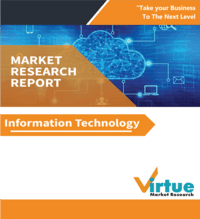IoT in Asset Management Market Size (2025–2030)
The Global IoT in Asset Management Market was valued at USD 17.64 billion and is projected to reach a market size of USD 26.41 billion by the end of 2030. Over the forecast period of 2025-2030, the market is projected to grow at a CAGR of 8.4%.
This growth is mainly attributed to the rising implementation of IoT technologies in numerous sectors to improve asset tracking, monitoring, and management.
Key Market Insights:
-
The Internet of Things (IoT) market in asset management is expected to grow strongly between the years 2025 and 2030 due to a number of factors including technological innovations, decreasing prices of IoT devices, and a favorable regulatory environment.
-
The integration of IoT with Artificial Intelligence (AI) and Machine Learning (ML) is improving asset management capabilities. Then the things mature the technologies for predictive maintenance, real-time monitoring, and data-driven decision-making, resulting in enhanced asset performance and longevity. The expanding usage of IoT devices & sensors in industrial spaces has contributed to rising RTLS demand, enabling accurate tracking & management of assets.
-
North America will hold the highest position in the IoT-based asset tracking and monitoring market during the forecast period. The existence of several prominent players in the medical, automotive, logistics, and aerospace sectors is supporting the demand for IoT solutions to facilitate operational costs and boost profits.
IoT in Asset Management Market Drivers:
Enhancing Operational Efficiency with Real-Time IoT Asset Monitoring Drives the Market Growth
IoT-based asset management solutions provide real-time data regarding the performance of the assets. It helps organizations improve their operations, reduce downtime, and increase their overall efficiency. It helps organizations make instant decisions as it is capable of remotely monitoring assets and giving real-time notifications about the likelihood of issues.
Harnessing IoT for Predictive Maintenance: Reducing Downtime and Extending Asset Life
With the help of Internet of Things (IoT) data, organizations can forecast equipment failure in advance and make provision for maintenance in advance so that they can reduce unplanned downtime. Predictive maintenance not only extends asset life but also saves maintenance cost and helps prevents expensive downtime disruptions.
IoT helps in achieving Regulatory Compliance and Safety.
Internet of Things (IoT) solutions enable organizations to achieve regulatory compliance by way of real-time and precise information about asset conditions. This makes regulatory compliance achievable in the case of safety protocols and environmental issues. It minimizes the risk due to asset failure and makes the workplace safer to work in.
IoT in Asset Management Market Restrains and Challenges:
There have been concerns regarding data privacy and security.
Mass-scale use of IoT devices increases the attack surface for cyber-attacks. Protection of data in communications between the devices and the privacy of sensitive information from data loss are ongoing concerns for organizations.
Problems are being faced regarding integration with the legacy systems.
Legacy systems are present in most organizations, and these might not be supported by currently available IoT solutions. New IoT systems could be hard to integrate with legacy systems and can be extremely costly too, with enormous sums of money going on system upgrades and retraining the staff.
The problem of high initial implementation cost.
Internet of Things (IoT) - enabled asset management systems implementation is associated with high initial costs, including investments in hardware, software, and network infrastructure. These tend to be too expensive for small and medium enterprises (SMEs), and therefore, the adoption of Internet of Things (IoT) solutions is kept in check.
IoT in Asset Management Market Opportunities:
Recently there has been an emergence of 5G Technology. The deployment of 5G networks provides better connectivity with lower data transfer faves and lower quiescence. This technology supports further effective and more reliable IoT dispatches, allowing for real-time asset shadowing and better analytics capabilities.
There has been a rapid growth in Smart metropolises in recent times. Smart municipality expansion provides openings for Internet of Things (IoT) - predicated asset operation for public structure, transport, and utility. IoT's effective use in these disciplines can result in better resource operation, lowering operating charges, and a better quality of communal services.
Recently the world has seen advancements in Artificial Intelligence (AI) and Machine Learning (ML). The integration of AI and ML with IoT bias supports more advanced level of data analysis, performing better predictive conservation, anomaly discovery, and decision -making processes. These technologies can meliorate asset performance and operating effectiveness substantially.
ROBOTICS MARKET REPORT COVERAGE:
|
REPORT METRIC |
DETAILS |
|
Market Size Available |
2024 - 2030 |
|
Base Year |
2024 |
|
Forecast Period |
2025 - 2030 |
|
CAGR |
8.4% |
|
Segments Covered |
By COMPONENT, DEPLOYMENT MODE, ORGANISATION, and Region |
|
Various Analyses Covered |
Global, Regional & Country Level Analysis, Segment-Level Analysis, DROC, PESTLE Analysis, Porter’s Five Forces Analysis, Competitive Landscape, Analyst Overview on Investment Opportunities |
|
Regional Scope |
North America, Europe, APAC, Latin America, Middle East & Africa |
|
Key Companies Profiled |
IBM, CISCO, ORACLE, SAP, SIEMENS |
IoT in Asset Management Market Segmentation: BY COMPONENT
-
Hardware
-
Software
-
Services
Sensors, RFID tags, GPS trackers, and other IoT devices for asset tracking.
Asset tracking software, analytics software, and applications to support data analysis and decision-making.
Consulting, implementation, maintenance, and support services provided by vendors to support effective system deployment and operation.
IoT in Asset Management Market Segmentation: BY DEPLOYMENT MODE
-
On-Premises
-
Cloud-Based
Systems deployed and operated within the organization's infrastructure, with more control and security.
Solutions hosted on cloud platforms, providing scalability, remote access, and lower maintenance loads.
IoT in Asset Management Market Segmentation: BY ORGANISATION
-
Small and Medium-Sized Enterprises (SMEs)
-
Large Enterprises
Adoption Trends: The Small and Medium-sized – Sized Enterprises (SMEs) are increasingly implementing IoT-based asset management solutions to improve operational efficiency and cost savings. The price of IoT-based sensors is reducing, and scalable solutions are now available, making it economical for SMEs to implement these technologies. IoT helps SMEs monitor asset performance in real-time, optimize maintenance, and utilize resources more efficiently, leading to higher productivity and competitiveness.
Adoption Trends: Large enterprises are the first to implement IoT-based asset management solutions due to their vast resources and the scale of their operations. Large enterprises utilize IoT to monitor massive sets of assets across geographies, enabling centralized management and data-driven decision-making. Coupling IoT with advanced analytics and machine learning enables large enterprises to implement predictive maintenance strategies, optimize asset utilization, and achieve significant cost savings.
IoT in Asset Management Market Segmentation: BY REGION
-
North America
-
Europe
-
Asia-Pacific:
-
Latin America
-
Middle East and Africa
North America will remain in a leadership position in the IoT-based asset tracking and monitoring market during the forecast period. Leading players in various sectors such as medical, automotive, logistics, and aerospace are driving the adoption of IoT to maximize operational efficiency and profitability.
The European IoT Asset Management market is likely to grow around $4.5 billion by 2026 at a CAGR of 10%. Regional drivers unique to Europe are stringent environmental regulations and a hard push towards sustainability, which is persuading organizations to adopt IoT solutions for optimal utilization of resources. Industry 4.0 is inducing innovation in smart manufacturing.
The Asia-Pacific market is likely to grow to $7 billion by 2025 with a remarkable CAGR of 15%. Leading players such as Huawei, IBM, and Cisco are dominating the market. The high percentage is driven by the adoption of advanced technology and connectivity for remote monitoring and management of assets, quite often across industries such as manufacturing, energy, transport, and infrastructure.
The Latin American IoT Asset Management market is likely to grow to $1.5 billion by 2025 with a CAGR of 11%.Increase in investments in infrastructure and a greater focus on smart city projects. Demand for improved asset visibility and operational efficiency in sectors such as agriculture and manufacturing is high.
Middle East and Africa are gradually adopting IoT for asset management with investments in smart city projects and infrastructure development.The need for efficient asset tracking across industries such as oil and gas, mining, and utilities is driving the adoption of IoT technology.
COVID-19 Impact on IoT in Asset Management Market :
The COVID-19 pandemic has impacted the IoT in the asset management market in a multi-dimensional manner:
Covid – 19 has also caused disruption in the supply chain. The pandemic caused widespread supply chain disruptions globally, leading to delays in the deployment of IoT asset management solutions.
COVID–19 had some positive effects too as it led to a boost in digital transformation. Conversely, the need for remote monitoring and management of assets grew immensely during the lockdowns, and some organizations sped up their transition to IoT-enabled technologies to maintain business continuity.
COVID-19 also led to budget constraints as the economy saw a downfall. Economic uncertainty led to some organizations postponing or reducing investments in new technologies, including IoT asset management systems.
IoT in Asset Management Market Latest Trends/Developments:
The IoT asset management market is evolving with different key trends.
The world saw the integration of IoT with advanced analytics. There has been an increased focus is on integrating IoT data and advanced analytics, like predictive and prescriptive analytics, to drive better decision-making and improve business performance.
The market is now embracing asset monitoring solutions. IoT-based asset monitoring and tracking solutions are increasingly being embraced in markets to minimize downtime and maximize asset usage.
The market is witnessing the launch of New IoT Devices. Firms are launching new IoT devices, including asset tags, to broaden their monitoring reach beyond conventional assets.
IoT in Asset Management Market Key Players:
Some of the prominent companies in the market of IoT Asset Management Market are:
-
IBM
-
CISCO
-
ORACLE
-
SAP
-
SIEMENS
Chapter 1. IoT in Asset Management Market – Scope & Methodology
1.1 Market Segmentation
1.2 Scope, Assumptions & Limitations
1.3 Research Methodology
1.4 Primary Sources
1.5 Secondary Sources
Chapter 2. IoT in Asset Management Market – Executive Summary
2.1 Market Size & Forecast – (2025 – 2030) ($M/$Bn)
2.2 Key Trends & Insights
2.2.1 Demand Side
2.2.2 Supply Side
2.3 Attractive Investment Propositions
2.4 COVID-19 Impact Analysis
Chapter 3. IoT in Asset Management Market – Competition Scenario
3.1 Market Share Analysis & Company Benchmarking
3.2 Competitive Strategy & Development Scenario
3.3 Competitive Pricing Analysis
3.4 Supplier-Distributor Analysis
Chapter 4. IoT in Asset Management Market Entry Scenario
4.1 Regulatory Scenario
4.2 Case Studies – Key Start-ups
4.3 Customer Analysis
4.4 PESTLE Analysis
4.5 Porters Five Force Model
4.5.1 Bargaining Power of Suppliers
4.5.2 Bargaining Powers of Customers
4.5.3 Threat of New Entrants
4.5.4 Rivalry among Existing Players
4.5.5 Threat of Substitutes
Chapter 5. IoT in Asset Management Market – Landscape
5.1 Value Chain Analysis – Key Stakeholders Impact Analysis
5.2 Market Drivers
5.3 Market Restraints/Challenges
5.4 Market Opportunities
Chapter 6. IoT in Asset Management Market – BY COMPONENT
6.1 Introduction/Key Findings
6.2 Hardware
6.3 Software
6.4 Services
6.5 Y-O-Y Growth trend Analysis BY COMPONENT
6.6 Absolute $ Opportunity Analysis BY COMPONENT, 2025-2030
Chapter 7. IoT in Asset Management Market – BY DEPLOYMENT MODE
7.1 Introduction/Key Findings
7.2 On-Premises
7.3 Cloud-Based
7.4 Y-O-Y Growth trend Analysis BY DEPLOYMENT MODE
7.5 Absolute $ Opportunity Analysis BY DEPLOYMENT MODE, 2025-2030
Chapter 8. IoT in Asset Management Market – BY ORGANISATION
8.1 Introduction/Key Findings
8.2 Small and Medium-Sized Enterprises (SMEs)
8.3 Large Enterprises
8.4 Y-O-Y Growth trend Analysis BY ORGANISATION
8.5 Absolute $ Opportunity Analysis BY ORGANISATION, 2025-2030
Chapter 9. IoT in Asset Management Market , By Geography – Market Size, Forecast, Trends & Insights
9.1 North America
9.1.1 By Country
9.1.1.1 U.S.A.
9.1.1.2 Canada
9.1.1.3 Mexico
9.1.2 BY COMPONENT
9.1.3 BY DEPLOYMENT MODE
9.1.4 BY ORGANISATION
9.1.5 Countries & Segments - Market Attractiveness Analysis
9.2 Europe
9.2.1 By Country
9.2.1.1 U.K
9.2.1.2 Germany
9.2.1.3 France
9.2.1.4 Italy
9.2.1.5 Spain
9.2.1.6 Rest of Europe
9.2.2 BY COMPONENT
9.2.3 BY DEPLOYMENT MODE
9.2.4 BY ORGANISATION
9.2.5 Countries & Segments - Market Attractiveness Analysis
9.3 Asia Pacific
9.3.1 By Country
9.3.1.1 China
9.3.1.2 Japan
9.3.1.3 South Korea
9.3.1.4 India
9.3.1.5 Australia & New Zealand
9.3.1.6 Rest of Asia-Pacific
9.3.2 BY COMPONENT
9.3.3 BY DEPLOYMENT MODE
9.3.4 BY ORGANISATION
9.3.5 Countries & Segments - Market Attractiveness Analysis
9.4 South America
9.4.1 By Country
9.4.1.1 Brazil
9.4.1.2 Argentina
9.4.1.3 Colombia
9.4.1.4 Chile
9.4.1.5 Rest of South America
9.4.2 BY COMPONENT
9.4.3 BY DEPLOYMENT MODE
9.4.4 BY ORGANISATION
9.4.5 Countries & Segments - Market Attractiveness Analysis
9.5 Middle East & Africa
9.5.1 By Country
9.5.1.1 United Arab Emirates (UAE)
9.5.1.2 Saudi Arabia
9.5.1.3 Qatar
9.5.1.4 Israel
9.5.1.5 South Africa
9.5.1.6 Nigeria
9.5.1.7 Kenya
9.5.1.8 Egypt
9.5.1.9 Rest of MEA
9.5.2 BY COMPONENT
9.5.3 BY DEPLOYMENT MODE
9.5.4 BY ORGANISATION
9.5.5 Countries & Segments - Market Attractiveness Analysis
Chapter 10. IoT in Asset Management Market – Company Profiles – (Overview, Product Portfolio, Financials, Strategies & Developments)
10.1 IBM
10.2 CISCO
10.3 ORACLE
10.4 SAP
10.5 SIEMENS
Download Sample
Choose License Type
2500
4250
5250
6900
Related Reports
Frequently Asked Questions
IoT asset operation is the use of Internet of Effects technology to cover and track physical means in real-time for decision-making and maximizing functional effectiveness.
The epidemic resulted in budget cuts and force chain interruptions but accelerated the relinquishment of IoT results for remote monitoring of means.
The trends are presently the addition of advanced analytics, the use of asset shadowing results, and the arrival of new IoT bias-like asset markers.
The request leaders are IBM, Cisco Systems, Oracle, SAP, and Siemens.
Benefits are real-time shadowing of means, prophetic conservation, bettered resource application, and bettered decision-making capability.




